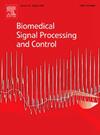Gait analysis and Machine learning algorithms to distinguish between Parkinson’s disease, amyotrophic lateral sclerosis, and Huntington’s disease
IF 4.9
2区 医学
Q1 ENGINEERING, BIOMEDICAL
引用次数: 0
Abstract
Parkinson’s disease is a neurological disorder that is both common and complex. It affects the nervous system, resulting in tremors, sluggish movements, and imbalance. It is a chronic and progressive condition that is regarded as the most prevalent neurodegenerative disease following Alzheimer’s disease. Although timely diagnosis enables the provision of essential care, Parkinson’s disease identification can be difficult due to the presence of numerous neurological disorders. Movement disorders are early symptoms of neurological diseases, and motion dynamics is an effective method for diagnosing them. This method evaluates and diagnoses the disease by analyzing the gait patterns of patients. This study specifically demonstrated this method to distinguish between Parkinson’s disease and other neurological disorders. After being obtained from the Physiont database, the proposed method preprocessed signals. The database contained 15 signals from individuals with Parkinson’s disease and 49 signals from healthy individuals and those with other neurological conditions. The wavelet transform filter bank with default coefficients from MATLAB software was employed to denoise and enhance the acquired signals in order to achieve superior results. The fourth variant of Dubichs, which was appropriate for biomedical signals, implemented a discrete wavelet transform with eight decomposition levels. Subsequently, a set of statistical, temporal, frequency, and nonlinear characteristics of signal was extracted and prioritized according to energy. Once the optimal features were selected from these extractions, linear support vector machines (SVM) and nonlinear models (nearest neighbor (KNN) and multilayer perceptrons (MLPs) were employed to classify signal information. The proposed method’s validity was evaluated through confusion matrix analysis, as well as calculations of specificity, sensitivity, and accuracy. The results suggest that the SVM classifier had a substantial discriminative capacity for distinguishing between Parkinson’s and non-Parkinson’s patients. The support vector machine was the most accurate classifier, achieving an accuracy rate of 98.4% in its ability to distinguish between individuals with Parkinson’s disease and those without. Multilayer perceptrons (MLPs), linear support vector machines (SVM), and nonlinear models (KNN) were used to classify the signal information after the optimal features from these extractions were determined. The proposed method was evaluated by confusion matrix analysis, specificity, sensitivity, and accuracy. The results demonstrate that the SVM classifier was highly discriminative in differentiating patients with and without Parkinson's disease, with an overall accuracy of 98.4% when differentiating individuals with and without Parkinson's disease, making the support vector machine the most accurate classifier.
步态分析和机器学习算法来区分帕金森病、肌萎缩侧索硬化症和亨廷顿病
帕金森氏症是一种既常见又复杂的神经系统疾病。它会影响神经系统,导致颤抖、行动迟缓和不平衡。它是一种慢性进行性疾病,被认为是继阿尔茨海默病之后最常见的神经退行性疾病。尽管及时诊断能够提供基本护理,但由于存在许多神经系统疾病,帕金森病的识别可能很困难。运动障碍是神经系统疾病的早期症状,运动动力学是诊断运动障碍的有效方法。该方法通过分析患者的步态模式来评估和诊断疾病。本研究专门证明了这种方法可以区分帕金森病和其他神经系统疾病。该方法从Physiont数据库中获取信号后,对信号进行预处理。该数据库包含15个帕金森氏症患者的信号和49个健康人及其他神经系统疾病患者的信号。利用MATLAB软件的默认系数小波变换滤波器组对采集到的信号进行去噪和增强,取得了较好的效果。Dubichs的第四种变体适用于生物医学信号,实现了8个分解层次的离散小波变换。随后,提取一组信号的统计、时间、频率和非线性特征,并根据能量进行优先级排序。一旦从这些提取中选择了最优特征,就可以使用线性支持向量机(SVM)和非线性模型(最近邻(KNN)和多层感知器(mlp)对信号信息进行分类。通过混淆矩阵分析以及特异性、敏感性和准确性的计算来评估该方法的有效性。结果表明,SVM分类器在区分帕金森病患者和非帕金森病患者方面具有较强的判别能力。支持向量机是最准确的分类器,在区分帕金森病患者和非帕金森病患者的能力方面达到了98.4%的准确率。多层感知器(mlp)、线性支持向量机(SVM)和非线性模型(KNN)在确定这些提取的最优特征后对信号信息进行分类。通过混淆矩阵分析、特异性、敏感性和准确性对该方法进行评价。结果表明,SVM分类器在区分帕金森病患者和非帕金森病患者方面具有很强的判别能力,在区分帕金森病患者和非帕金森病患者时,支持向量机的总体准确率为98.4%,是最准确的分类器。
本文章由计算机程序翻译,如有差异,请以英文原文为准。
求助全文
约1分钟内获得全文
求助全文
来源期刊

Biomedical Signal Processing and Control
工程技术-工程:生物医学
CiteScore
9.80
自引率
13.70%
发文量
822
审稿时长
4 months
期刊介绍:
Biomedical Signal Processing and Control aims to provide a cross-disciplinary international forum for the interchange of information on research in the measurement and analysis of signals and images in clinical medicine and the biological sciences. Emphasis is placed on contributions dealing with the practical, applications-led research on the use of methods and devices in clinical diagnosis, patient monitoring and management.
Biomedical Signal Processing and Control reflects the main areas in which these methods are being used and developed at the interface of both engineering and clinical science. The scope of the journal is defined to include relevant review papers, technical notes, short communications and letters. Tutorial papers and special issues will also be published.
 求助内容:
求助内容: 应助结果提醒方式:
应助结果提醒方式:


